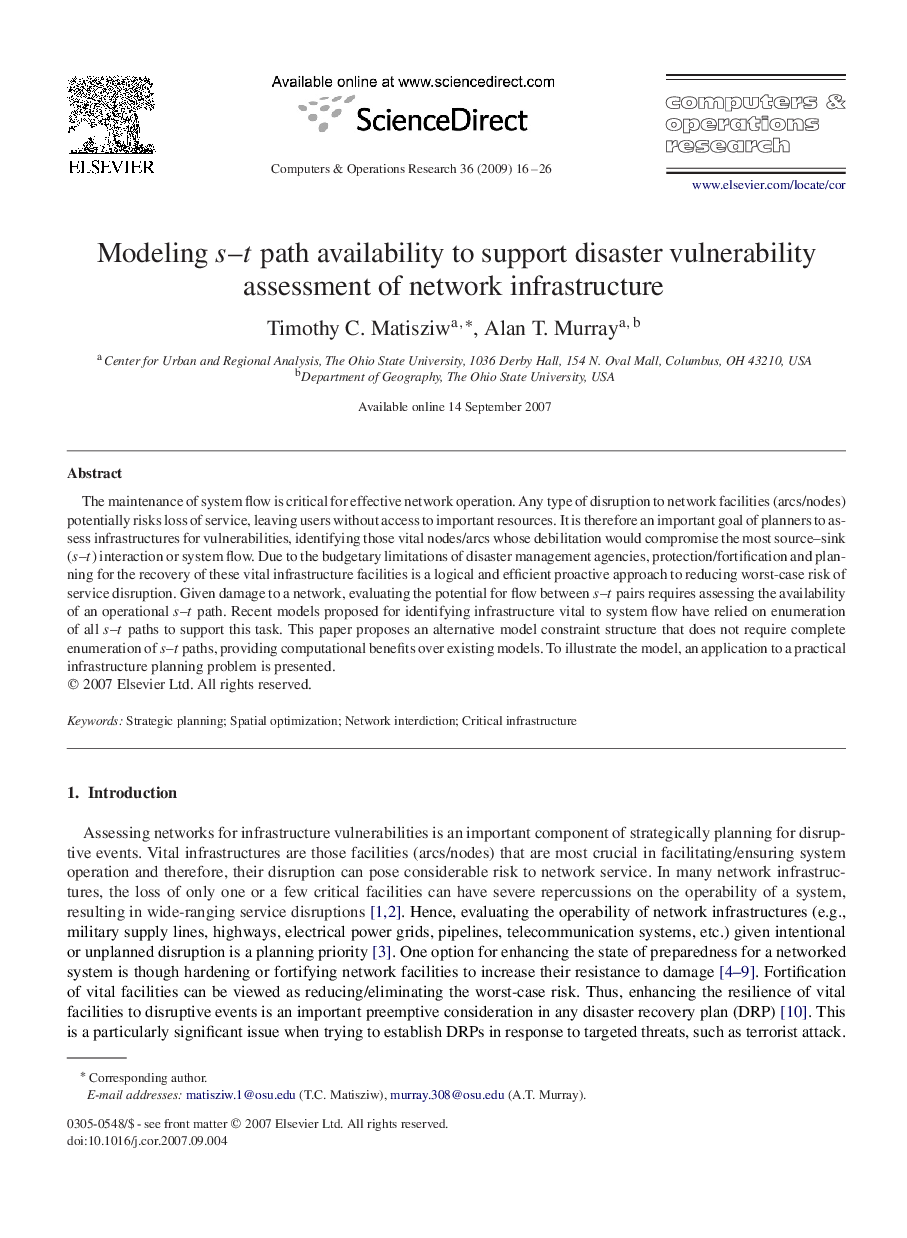| Article ID | Journal | Published Year | Pages | File Type |
|---|---|---|---|---|
| 474832 | Computers & Operations Research | 2009 | 11 Pages |
The maintenance of system flow is critical for effective network operation. Any type of disruption to network facilities (arcs/nodes) potentially risks loss of service, leaving users without access to important resources. It is therefore an important goal of planners to assess infrastructures for vulnerabilities, identifying those vital nodes/arcs whose debilitation would compromise the most source–sink (ss–tt) interaction or system flow. Due to the budgetary limitations of disaster management agencies, protection/fortification and planning for the recovery of these vital infrastructure facilities is a logical and efficient proactive approach to reducing worst-case risk of service disruption. Given damage to a network, evaluating the potential for flow between ss–tt pairs requires assessing the availability of an operational ss–tt path. Recent models proposed for identifying infrastructure vital to system flow have relied on enumeration of all ss–tt paths to support this task. This paper proposes an alternative model constraint structure that does not require complete enumeration of ss–tt paths, providing computational benefits over existing models. To illustrate the model, an application to a practical infrastructure planning problem is presented.
